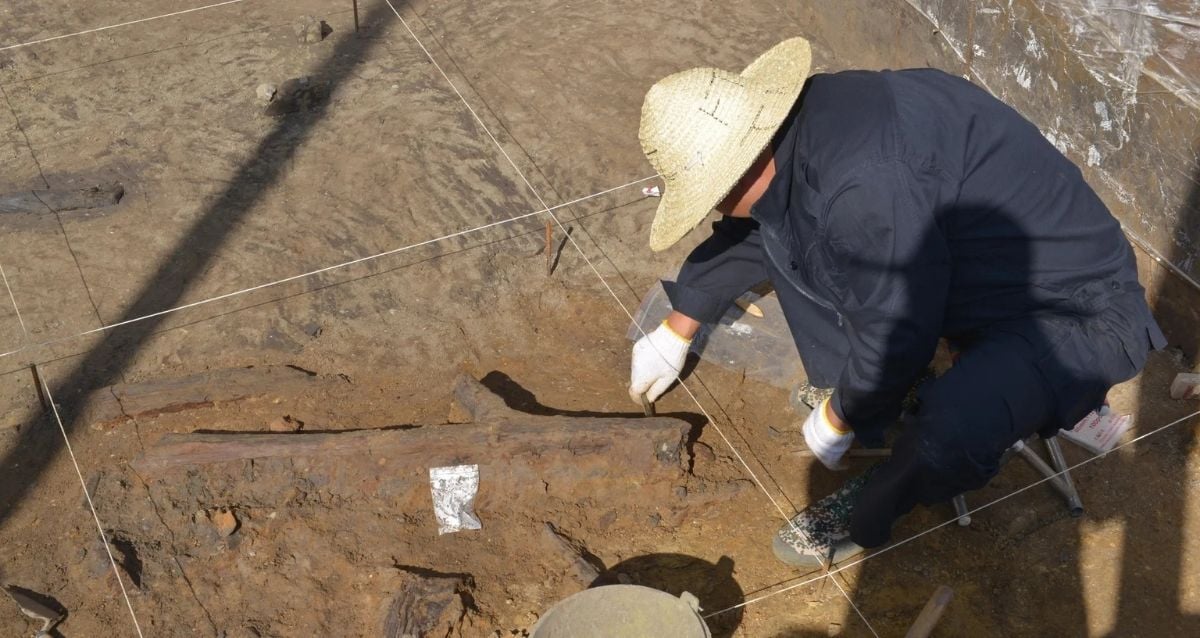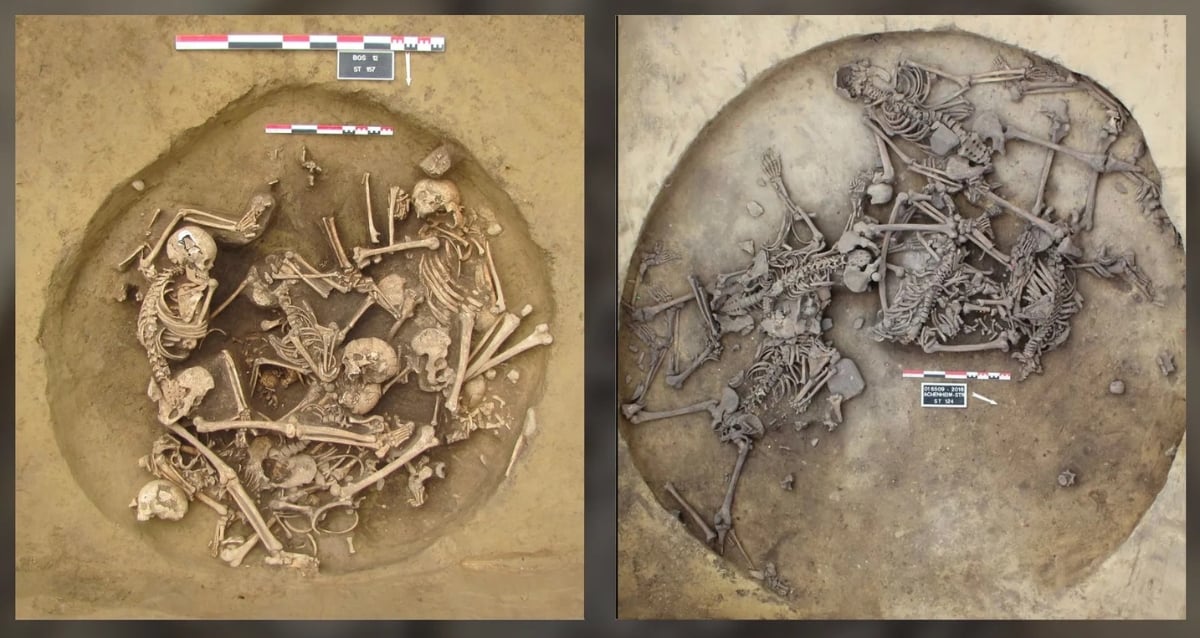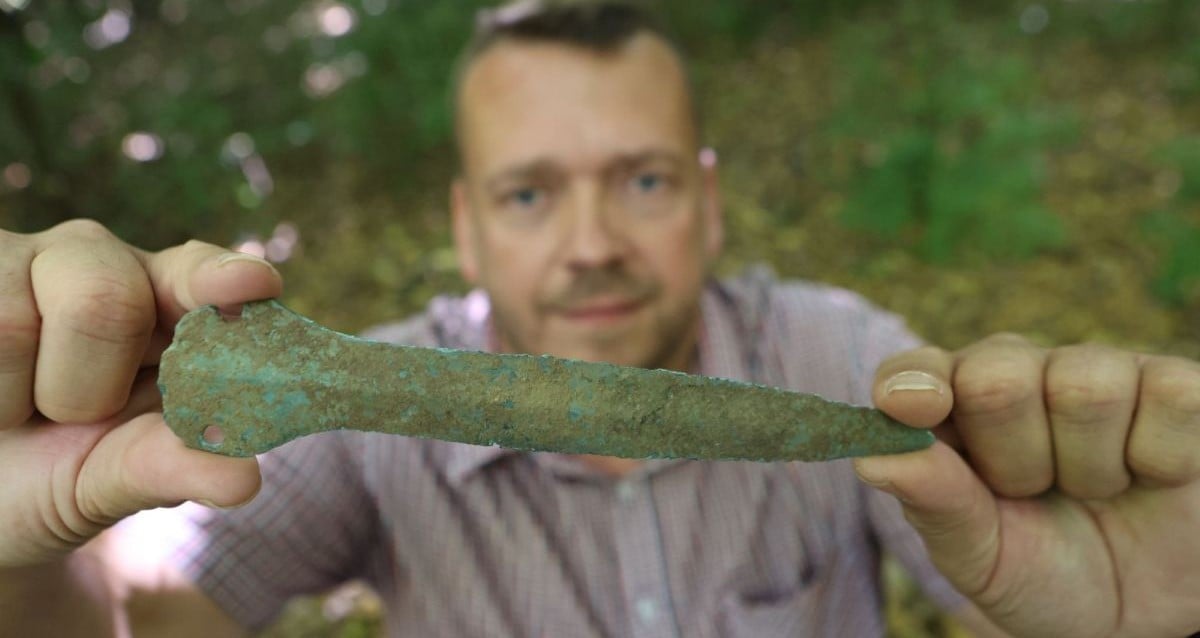Ancient Mystery Unearthed: 300,000-Year-Old Wooden Tools Found Intact Beneath Chinese Clay
Several hook-shaped implements seem to have been sharpened and were likely used to slice through roots. Together, these two of tools hint at a probable process: dig into the soil with the larger tool and then slice away at the roots with the smaller hook.
A third type of tool from the site has a less obvious purpose. Carved tools with rounded sides and pointed tips measured between two and three inches in length, far too small for any practical digging. It’s possible, researchers said, that they may have been awls or some other type of specialized tool to separate tangled roots.
“The sophistication of many of these tools offsets the seemingly ‘primitive’ aspects of stone tool assemblages in the East Asian Early Paleolithic,” the researchers wrote. “This discovery suggests that wooden implements might have played an important role in hominin survival and adaptation in Middle Pleistocene East Asia.”
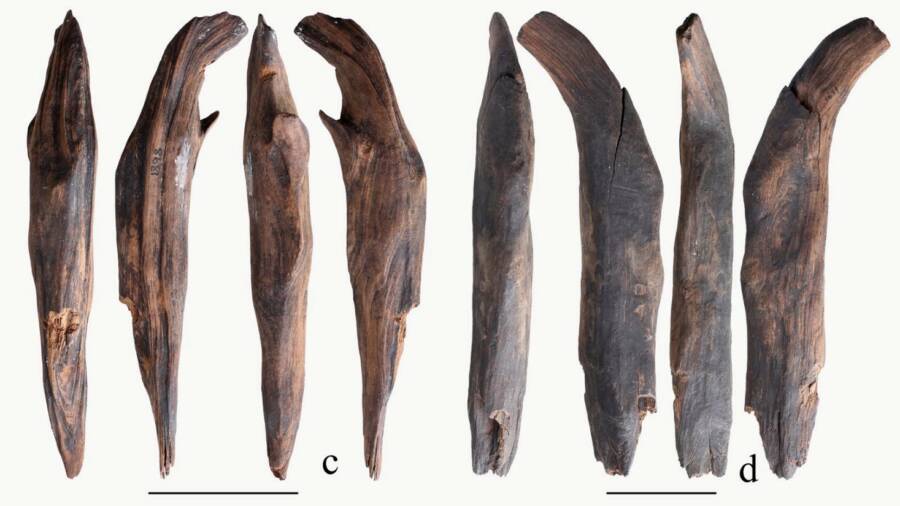
Liu et al. 2025The wooden, hook-like tools may have been used to cut roots.
So, which prehistoric group made these tools in the first place?
Uncertainty Over Which Species Crafted The Tools
The timeline determined by researchers raises interesting questions about the craftsmen who made these tools. Around 300,000 years ago, Homo sapiens were already inhabiting Africa, but they had not yet spread into Eurasia. That wouldn’t happen for another 100,000 years.
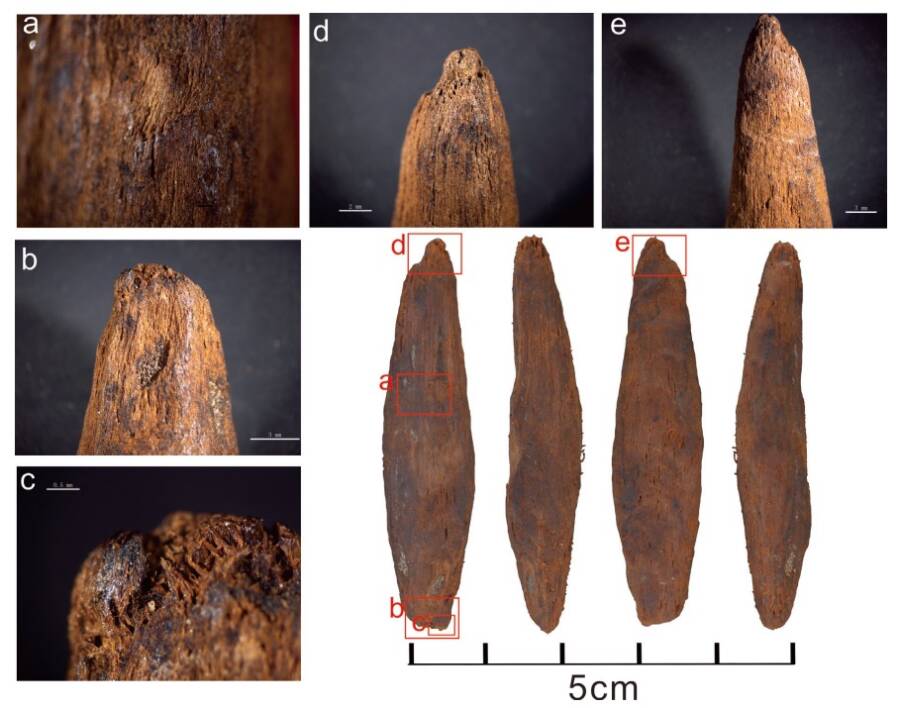
Liu et al. 2025The smallest tools discovered at the site did not have a clear purpose.
That leaves three primary candidates for the tools’ makers: Homo erectus, Denisovans, or Homo heidelbergensis, the last common ancestor between modern humans, Denisovans, and Neanderthals. Without any identifiable bones at Gantangqing, though, it’s impossible to say which of these three hominin species crafted the tools.
